11 of the best things to do in Samoa

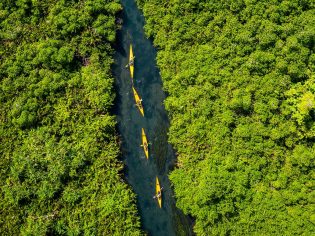
From nature to culture, there are plenty of things to do in Samoa, and they're all family-friendly. (Image: Samoa Tourism Authority)
For a small country, the islands of Samoa pack a big punch when it comes to incredible things to do.
Most tourist head on an island holiday to spend their whole time lazing on the beach. While these are some of the best beaches in the world to do that on, there is such an array of natural and cultural things to do in Samoa that you’d be missing out if you didn’t explore a little more.
From museums for famous authors, to gaining a deeper cultural understanding, to walking lava fields; here are our top 11 picks to put on your bucket list. The best part is, they’re all suitable for the kids as well.
1. Go wild swimming
The order of the day on a holiday to Samoa is to relax into island life, and that means swimming. While many hotels have pools, it’s the natural oceans, waterfalls and unique cave pools that really beg you to soak them in. From unbelievable cave pools carved out over many years by the motion of the ocean, or dramatic waterfalls nestled into lush green rainforests, or even the endless beaches with water so blue and clean they define ‘crystal clear’ – you’ll find the best wild swimming spots here.
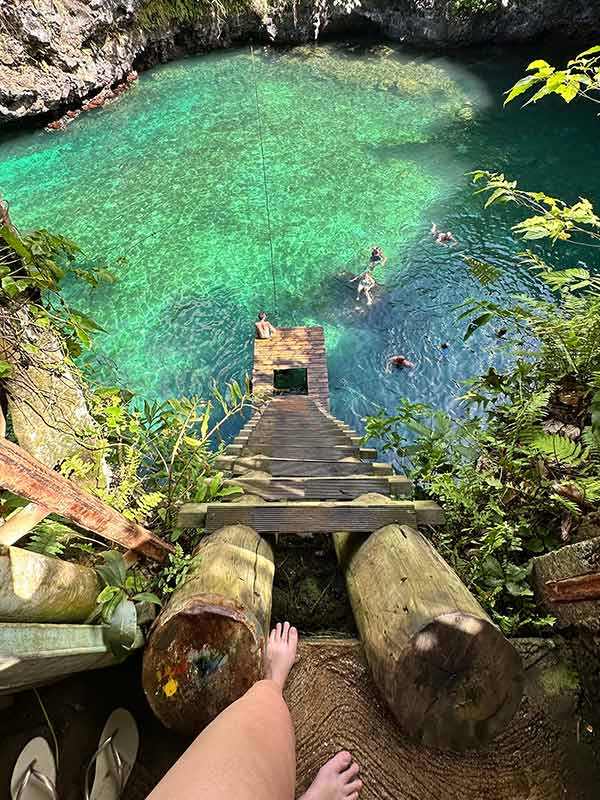
Be sure to take a dip in To Sua ocean trench. (Image: Kassia Byrnes)
2. Visit the Robert Louis Stevenson Museum
Book nerds can’t miss the Robert Louis Stevenson Museum. The famous author of Treasure Island and Strange Case of Dr. Jekyll and Mr. Hyde lived out the final years of his life (1890-1894) in a grand home built in the mountains above Apia. Today, that home has been reconstructed to look just as it did originally, still featuring an original grand wooden staircase and many original artefacts owned by him and his family.
For WST$20 ($11) for adults and WAST$5 ($2.70) for kids, a very knowledgeable guide will escort you through the two-storey house, explaining each room and what was known about the family as you go. You’ll even get a very beautiful song with the words of Stevenson’s final poem, engraved on his tombstone.
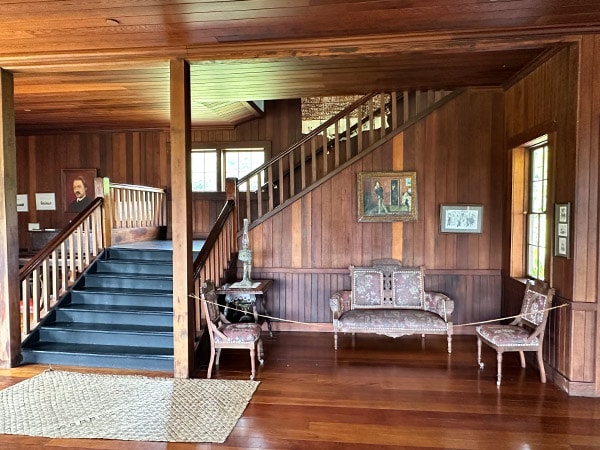
See the original staircase Robert Louise Stevenson built. (Image: Kassia Byrnes)
A small gift shop has been set up, selling famous and lesser-known works by Stevenson and even other family members (as well as general tourist knickknacks), and if you buy one you’ll get a stamp inside the cover to prove where you purchased it.
Speaking of the tombstone, Stevenson and his wife were buried a short but very steep walk from the property at the top of Mountain Vaea. If it hasn’t been raining (when the paths get too slippery to climb) and you’re feeling up to it, you can visit their final resting place.
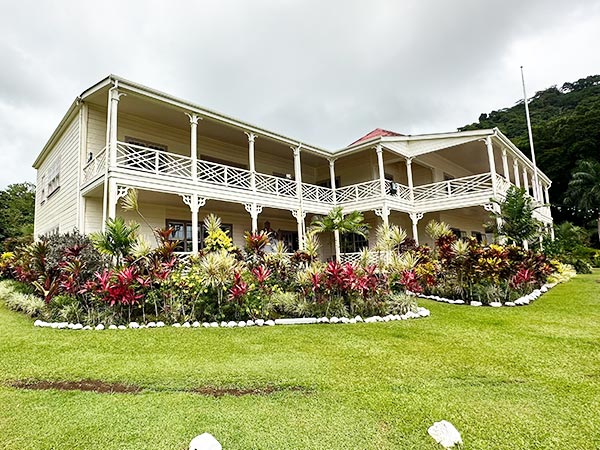
See the grand final home of Stevenson. (Image: Kassia Byrnes)
3. Attend a fiafia night
Samoan fiafia nights are basically big parties, celebrating traditional dancing, singing, music, and cooking styles. During the performance, a buffet will typically be served, featuring traditional Samoan cuisine of meat, seafood, and vegetables cooked using the umu.
Dance groups run through their vibrant, joyful and loud choreography. The men dance with incredible energy and big moves, while the women dance through graceful, flowing movements. All the while live music is being played. A big part of fiafia nights is also the traditional fire dancing or fa’ataupati. It’s truly impressive to watch the performers dancing with twirling fire sticks, and never get burnt. Expect to be asked to participate, both in the opening welcome ceremony and the final dance of the show.
Many hotels and resort will organise their own fiafia nights at least once a week, so be sure to ask when you check in. One of the best events to attend, however, is held by Return To Paradise Resort. Both the dance group and the fire dancing performers are considered the best in the country.

Be impressed by the fa’ataupati dancers. (Image: Samoa Tourism Authority)
4. Take in a show at Samoa Cultural Village
Ask the locals and they’ll tell you one of the things that sets Samoa apart from its Pacific Island neighbours is their living culture. They still have big family feasts cooked on the traditional earth oven, umu, every Sunday, traditional dancers tourists can witness at fiafia nights still compete in groups to be the best in the country, as do the fire dancers, and traditional stick and poke tattoos (tatau) are still a significant part of the culture and must be taken seriously.
This is why a stop at the Samoa Cultural Village in Apia towards the start of your trip is one of the best things to do. You’ll get to witness all these things (including the tattoo, if you’re lucky) and more, while learning the meaning and history behind them. A show here adds a cultural understanding that elevates the rest of your trip.
Tours run daily from 10am to 1.30pm, and tickets cost WST$10 ($5.40) for adults and WST$5 ($2.70) for kids.
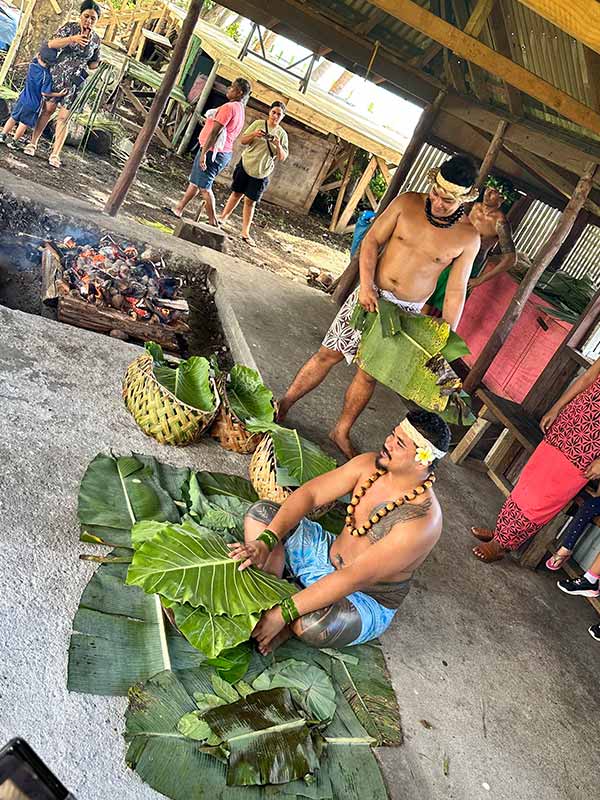
Watch as a feast is cooked on an umu. (Image: Kassia Byrnes)
5. Sip coffee at The Forest Cafe
There are plenty of cute cafes and restaurants to get your fill in Samoa – and you honestly should be indulging in their local cuisine as much as possible. However, one cafe is such a dining experience that it warrants a spot on this list: The Forest Cafe.
While the coastal views around Samoa are incredible, you’d be remiss not to venture into the equally beautiful dense green rainforests in the centre of Upulo. Nestled in these rainforested mountains near Apia, you can sit for a while out on the cafe’s wooden platform sitting above a ravine, as the birds sing and flit around you.
They’re especially popular for brunch (and their apple pie) and cold brews, but a hot coffee may be welcome in the chiller temperatures of the mountains. It’s also one of the few cafes open on a Sunday.
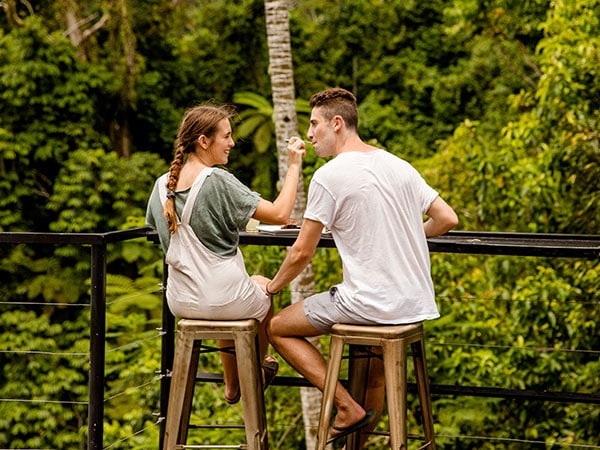
Enjoy brunch and coffee surrounded by the rainforest. (Image: Samoa Tourism Authority)
6. Find local treasures at Fugalei Market
The longer you spend in Samoa, the more you’ll notice vibrant fabrics and intricately woven bags worn and carried by locals. It’s almost impossible not to want your own, and the best place to find them is at the markets dotted over the country. The biggest, and best for its wide selection? Fugalei Fresh Produce & Flea Market in Apia.
Here you’ll find tasty treats, locally grown produce, stunning fabrics, crafts, handwoven handbags, and plenty of souvenirs. If you’re worried about getting something handwoven through customs, apparently the trick is to make sure no little critters have made it their home by banging it onto a hard surface.
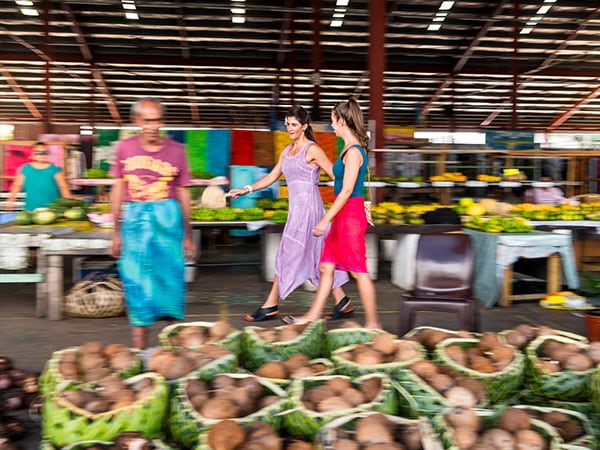
Look through local produce and crafts at Fugalei Market. (Image: Samoa Tourism Authority)
7. Marvel at Sopo’aga Waterfall
This isn’t a waterfall you can swim in, but the powerful Sopo’aga Waterfall is a truly impressive sight to behold. Head to Lotofaga village on Upolu and pay WST$5 to follow a very short path through a garden boasting the vibrant colours of Samoan plants and trees, to the viewing area.
One of the largest falls in the country, water thunders 32 metres over the edge of rainforest-clad land into the waiting river below. Sit on the provided bench to really enjoy the sight, and give in to the serenity this place exudes.
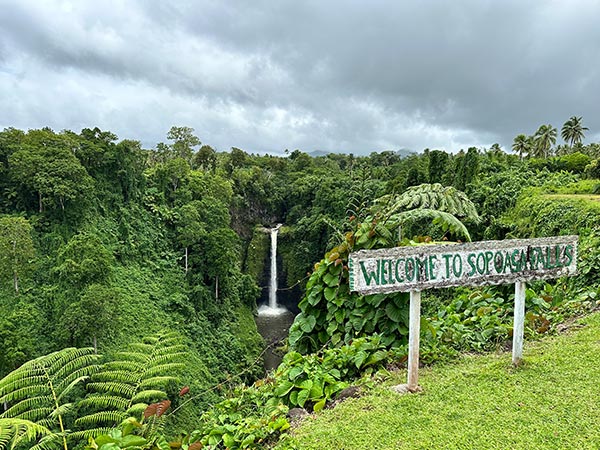
Pay a small fee to view one of the largest waterfalls in Samoa. (Image: Kassia Byrnes)
8. Catch the ferry to Savai’i island
It’s very surprising that more visitors to Samoa don’t leave the main populated island of Upolu, especially when the car ferry to Savai’i is only about an hour and the views are beautiful. While Samoa is spoiled for choice when it comes to stunning scenery and places to swim, on Savai’i there’s a good chance you’ll get them completely to yourself.

Get away from the main island and catch the ferry to Savai’i. (Image: Kassia Byrnes)
9. Alofaaga Taga Blowholes
Naturally carved into the volcanic rock, these blowholes in the Palauli district on Savai’i are quite a sight. Sometime between 1905 to 1911, Mt Matavanu erupted on this island, burying five villages. Now, the lava flows long since solidified into tubes through which the ocean’s waves can travel. When the waves push through with enough force, they erupt with a distinctive sound and strikingly high sea spray out the top.
You’ll pay WST$10 ($5.40) to enter the area, which is unfenced and able to be walked on – but be aware of slippery rocks and don’t get too close. There are three different blowholes, with the furthest from the parking area being the biggest. You’ll want to sit and watch for a while to make sure you see their best blows.
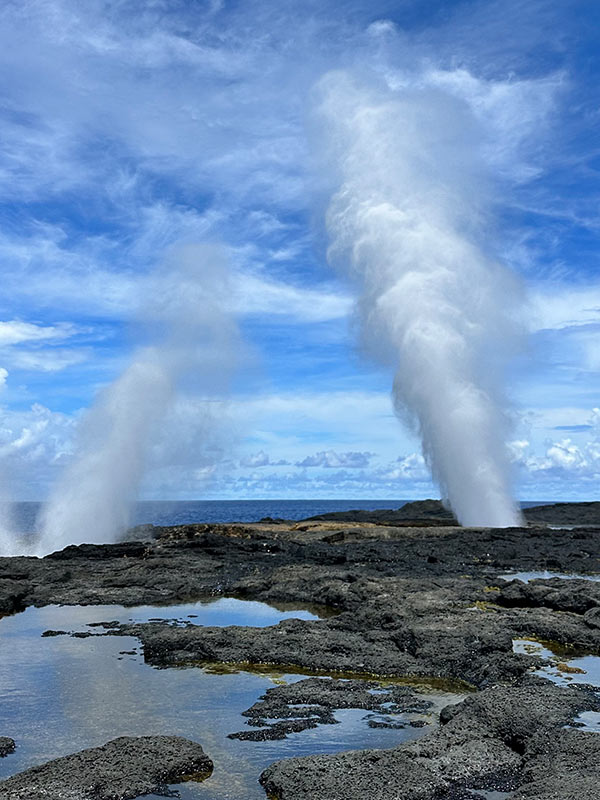
Watch the Alofaaga Taga Blowholes, formed by old lava flows. (Image: Kassia Byrnes)
10. Saleaula Lava Fields
Not far away from the blowholes, you’ll find the Saleaula Lava Fields, which hold a strong cultural and spiritual significance for Samoans. Walk right over the long-solidified lava flows, the final movements of the eruption etched right into the rock.
For WST$10 ($5.40), you’ll be taken by a guide to see all that remains of the structures before Mt Matavanu blew its top: the walls of a church and what is allegedly the grave of the then-chief’s virgin daughter. As you can imagine, in a very religious country both these remains are considered to be a sign of God.
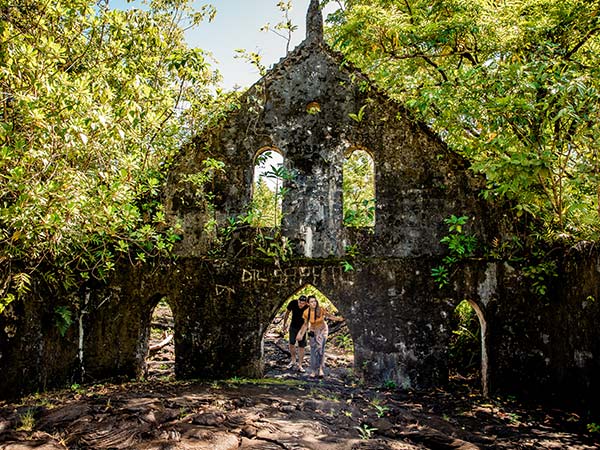
See the final movements written into the Saleaula Lava Fields. (Image: Samoa Tourism Authority)
11. Asaga Mangroves
The opening to Asaga Mangroves is very hard to spot and you’d be forgiven for driving right past, but you’d be missing out on some beautiful mangrove formations and the chance to learn more about this country’s ecosystem.
Book a tour through Samoa Tourism Authority to join a guided kayak through the mangroves. Although not all guides are fluent in English, there’s enough communication to be shown highlights of wetland ecosystems and animals. Once you’ve booked, head to Asaga village and keep your eyes peeled for the Asaga River Pool sign and Beach Fales.
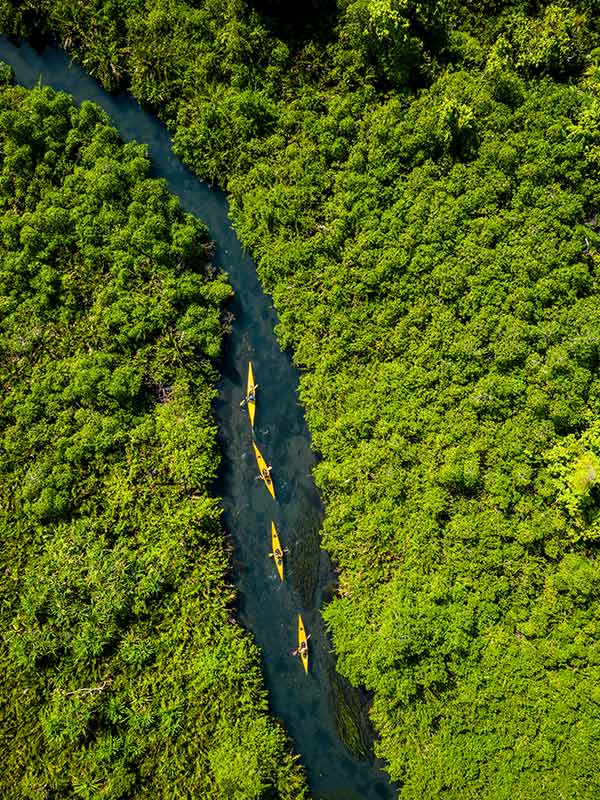
Join a guided kayak tour along the Asaga Mangroves. (Image: Samoa Tourism Authority)
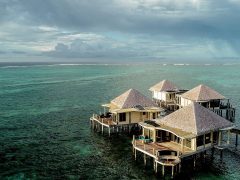
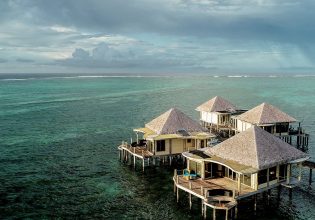
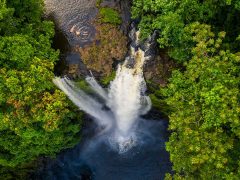
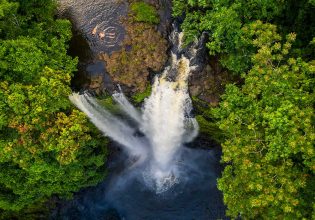
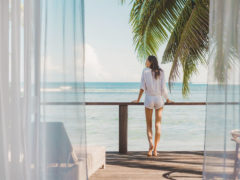
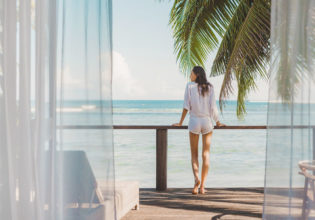
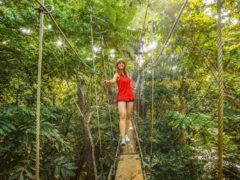
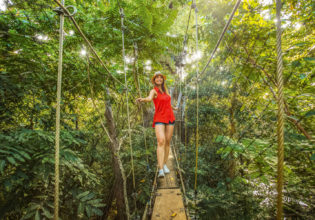
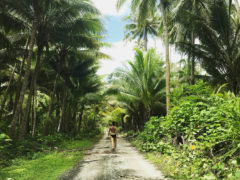
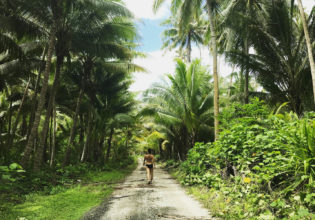


LEAVE YOUR COMMENT